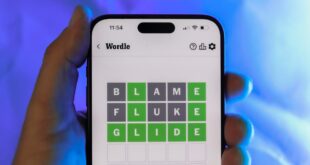The iconic space probe Voyager 1 was the first man-made object to escape the solar system, traveling at a maximum speed of 38,000 mph for 35 years to accomplish the feat. The probe launched on Sept. 5, 1977, and when tech gets that old, it’s bound to run into some issues. Voyager 1 gave NASA a scare last month when the space agency lost track of it for a few days, only to find it again on a different radio frequency when the probe switched to a radio it hadn’t used since the 1980s.
The drama began on Oct. 16 when NASA engineers told Voyager 1 to turn on one of its heaters. Voyager 1 should have had enough power left in its banks to turn on the heater without issue, but an unknown event caused it to trigger its fault-protection system, which enables and disables various instruments on the probe to help save power. Due to radio transmissions taking nearly a full day to reach Earth from beyond the solar system, NASA didn’t know it had lost contact with Voyager 1 until Oct. 18.
A computer-generated image of Voyager’s position relative to the solar system as of October 2024.
At the time, the probe had reduced power to its X-Band radio, which caused it to transmit on a different frequency. NASA was able to regain contact by sweeping the X-Band frequencies for a short while only to lose contact again on Oct. 19. This time, NASA discovered that Voyager 1 had disabled the X-Band radio entirely and switched instead to the S-Band radio, a radio that Voyager 1 hadn’t used since 1981. NASA sent a test signal to confirm that the S-Band radio was, in fact, switched on and received a response on Oct. 24.
NASA says that it’s going to leave the S-Band radio on for the time being while it figures out why the fault protection system kicked on to return Voyager to normal operations, including restoring the X-Band radio to service.
Nearly 50-year-old tech
Voyager 1 and Voyager 2 have been through their fair share of issues. Voyager 1 had technical issues in 2023 that required fixing before the probe started sending science data again in June 2024, while Voyager 2 had some instruments shut down to conserve power in October 2024.
Both probes are in reasonably good health for their ages, but neither probe is getting any younger. Both probes are powered by radioisotope thermoelectric generators. These generators contain plutonium that is continually decaying and the generators use the heat generated from the decay to power the probes.
As the material continues to decay, the amount of heat it generates lessens, thus supplying Voyager 1 and 2 with less power as time goes on. To combat this effect, NASA has been periodically shutting down non-essential systems to keep both probes flying and working for as long as possible.
Currently, both probes have a variety of systems turned off to conserve power, including the imaging subsystem responsible for the iconic blue dot photo of Earth. Some of the science instruments are still online, though, and are still transmitting data. Those instruments continue to provide valuable data about the universe outside of our solar system, including the ever-present interstellar gas that Voyager 1 continues to float through to this day.
 synnbiob
synnbiob

